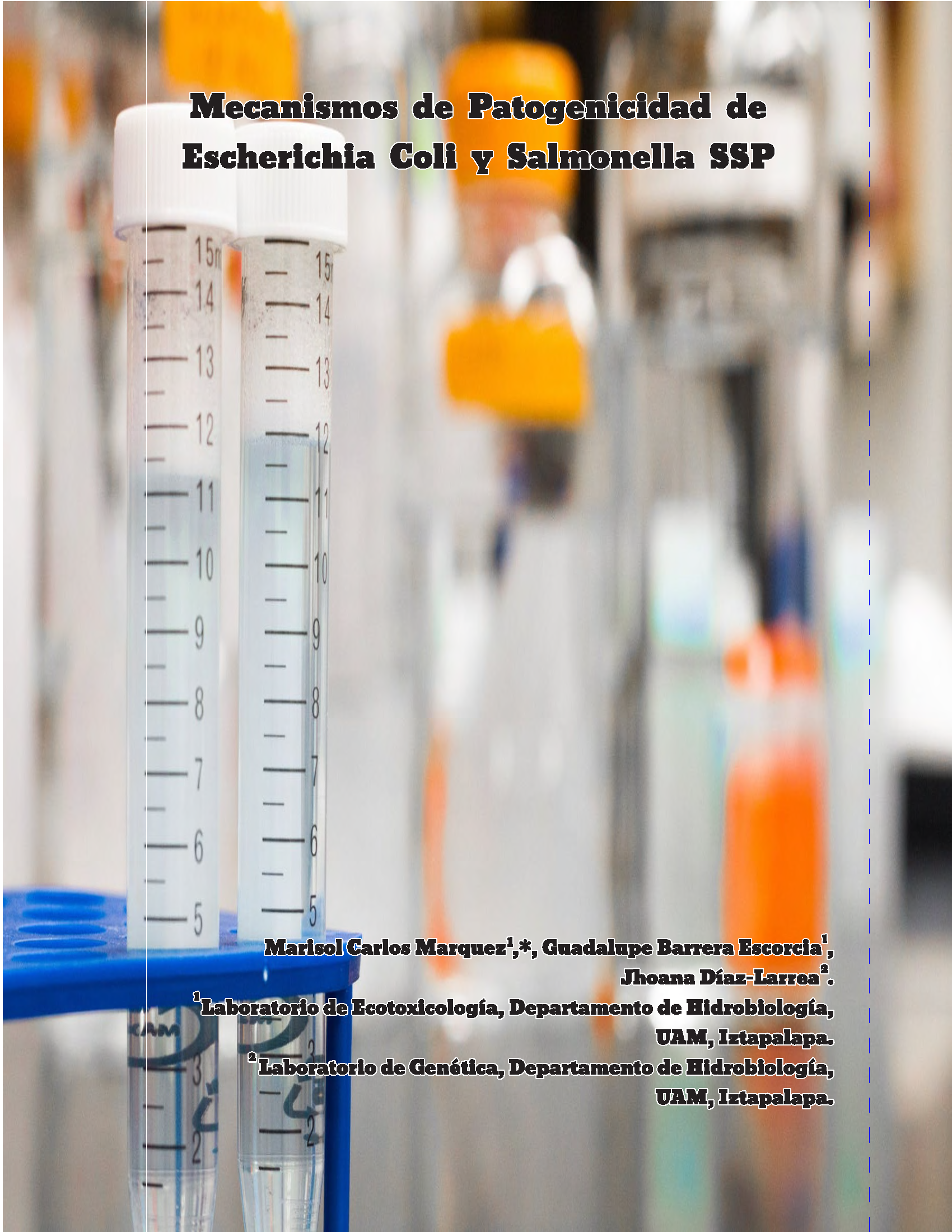Pathogenicity Mechanisms of Escherichia Coli and Salmonella SPP
Abstract
Acute diarrheal diseases are caused by the consumption of contaminated food and water, Salmonella ssp and Escherichia coli are among the main diarrheal agents, describing the virulence factors and pathogenicity mechanisms involved in the seven E. coli serotypes known as E. coli. enteropathogenic coli (ECEP), enterotoxigenic E. coli (ECET), E. coli enteroinvasora (ECEI), shigatoxigenic E. coli (ECST), enteroaggregative E. coli (ECEA) and diffuse adhesion E. coli (ECAD) and E. coli invasive adherent coli (ECAI), by which each type of strain has diff erent mechanisms of pathogenicity and Salmonella is divided into two species, the first Salmonella bongori and the second Salmonella enterica which can be subdivided into 6 different subspecies: subspecies enterica (1), salamae (11), arizonae (lila), diaroniae (IIIb ), houtenae (IV) and indicates (VI); however, S. enterica enteric subspecies with a large number of serotypes and the mechanism of pathogenicity is by two types: the first by the M-cell dependent pathway and the second by the SST3 encoded in two islands of pathogenicity SPis and SPI2, both SST3 do not act independently but collaborate with each other. Through the evolution, the pathogens bacterias have been developed mechanisms that divided in two categories: those that promote the colonization and host invasion and the others that cause damage.
Downloads
References
Baca, B.E., García, G.S., Pardo, R.M., Santiago, A.E., y Velázquez, S.C. Explorando el mecanismo de acción de las toxinas bacterianas: citotoxinas, ciclo modulinas, y citolisinas colesterol-dependientes. En: Rocha, G.E., Lozano, Z.P., Martínez, L.Y. Mecanismos de Patogenicidad e interacción parasito hospedero 11. Benemérita Universidad de Puebla, Centro de Investigaciones en Ciencias Microbiologías, Puebla. 2006.
Baldi, F., Bianco, M., Nardone, G., Pilotto, A., y Zamparo, E. Enfermedades diarreicas agudas. World J Gastroenterol, 15[27], pp. 3341-3348, 2009.
Barrera-Escorcia, G., C. L. Femández-Rendón, y Wong-Chang, l. Toxinas microbianas. In: Robledo, M. M. L., G. A. E, Rojas, D. l. M. Medina, V. B. S. Barrón (Eds.). Fundamentos de toxicología. Universidad Autónoma de Nayarit, México, pp. 351-368, 2012.
Cárdenas, M., Cruz, O., Gándara, J., y Pérez, M. Factores de virulencia bacteriana: la "inteligencia" de las bacterias. Elementos, 94, pp. 35-43, 2014.
DeVinney, R., Puente, J., Gauthier, A., Goosney, D., y Finlay, B. B. Enterohaemorrhagic and enteropathogenic Escherichia coli use a diff erent Tir-based mechanism for pedestal formation. Molecular microbiology , 41 [6], pp. 1445-1458, 2002.
Farfán, A., Ariza, S., Vargas, F., y Vargas, L. Mecanismos de virulencia de Escherichia coli enteropatógena. Revista chilena de infectología, 33[4],pp. 438-450, 2016.
Galán, J. E. Interaction of Salmonella with host cells through the centisome 63 type 111 secretion system. Current opinion in microbiology, 2[1],pp. 46-50,1999.
Girón, J., Torres, A., Freer, E., y Kaper, J. The flagella of enteropathogenic Escherichia coli mediate adherence to epithelial cells. Molecular microbiology, 44[2],pp. 361-379,2002.
Golán, L., Gonen, E., Yagel, S., Rosenshine, l., y Shpigel, N. EnterohemorrhagicEscherichia coli induce attaching and effacing lesions and hemorrhagic colitis in human and bovine intestinal xenograft models. Disease models & mechanisms,4[1],pp. 86-94,2011.
González M. R., Bischfberger M., Pemot L., van der Goot F. G., y Freche, B. Bacteria! pore-forming toxinc: Toe (w)hole story? Cellular and Molecular Lije Sciences, 65. pp. 493-507, 2008.
González, P., y Dreyfus, G. Sistemas de secreción de proteínas en las bacterias Gram negativas: Biogénesis flagelar y translocación de factores de virulencia. Mensaje bioquímico, 27. pp.19,2OO3.
Haraga, A., Ohlson, M. y Miller, S. Salmonellae interplay with host cells. Nature Reviews Microbiology, 6[1 ], pp. 53, 2008.
Hensel, M. Salmonella pathogenicity island 2. Molecular microbiology , 36[5], pp. 1015-1023,2000.
MnJunk:in, E. Agua y salud humana. Ed. Limusa. México, D.F, pp. 231, 1988.
Ochoa, l. y Rodríguez, A. Mecanismos moleculares de patogenicidad de Salmonella sp. Revista latinoamericana de microbiología, 47[1-2], pp. 25-42, 2005.
E. Ramiro-Puig, F. J. Pérez-Cano, C. Castellote, A. Franch y M. Castell. El intestino: pieza clave del sistema inmunitario. Revista Española de Enfermedades Digestivas. 100 [1], pp. 29-34, 2008.
Trabulsi, L., Keller, R., y Tardalli, G. Typical and atypical enteropathogenic Escherichia coli. Emerging infectious diseases, 8[5], pp. 508, 2002.
Vidal, J., Canizález, A., Gutiérrez, J., y Navarro, F. Patogénesis molecular, epidemiología y diagnóstico de Escherichia coli enteropatógena. Salud Pública de México, 49[5],pp. 376-386, 2007.






